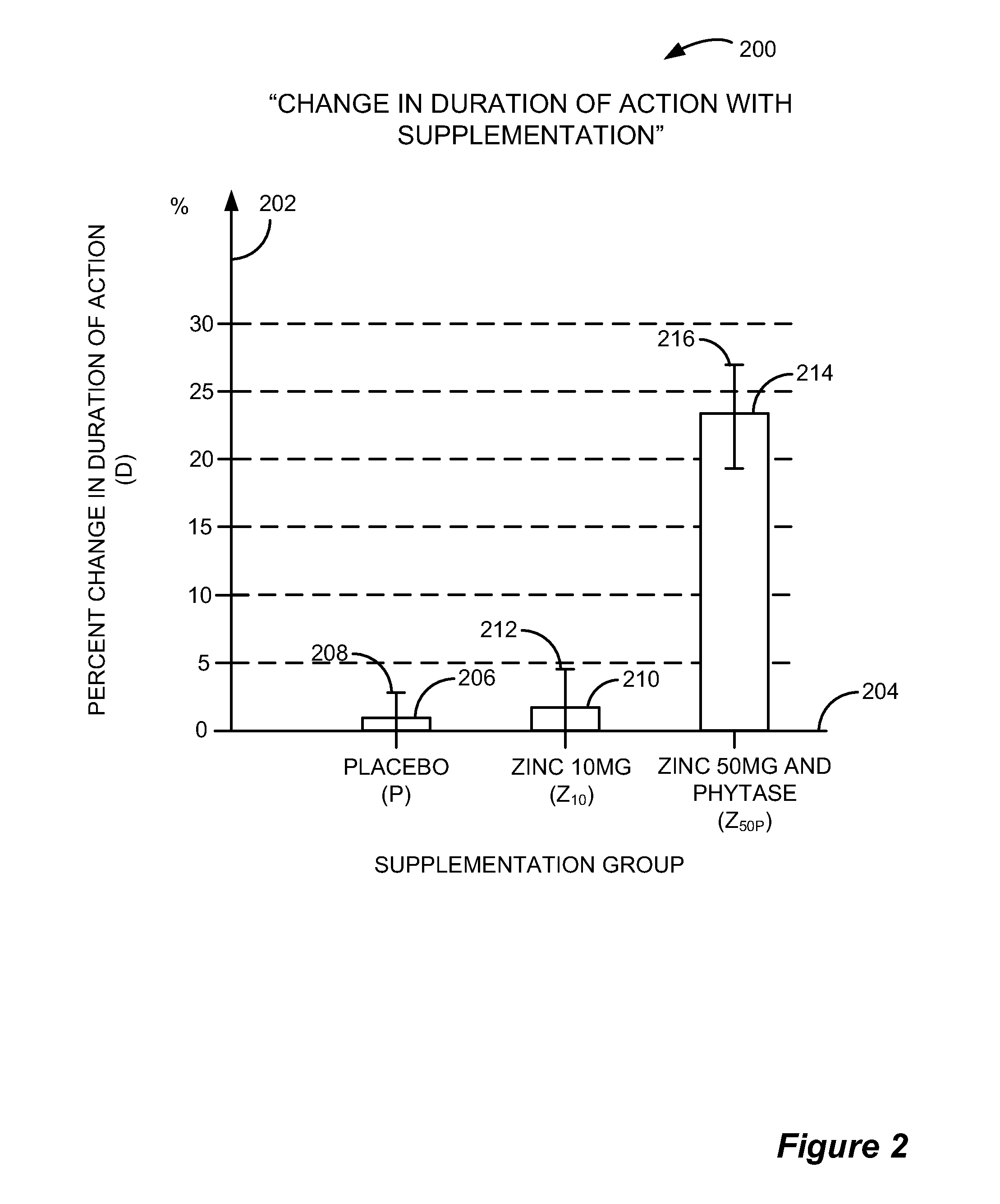Compositions and Methods for Enhancing Metal Ion Dependent Drug Therapies
a technology of metal ion and drug therapy, applied in the field of cofactor dependent toxins, can solve the problems of difficult diagnosis of patient response to treatment, poor or non-responsiveness of patients to toxins, and limited shelf life, so as to improve the safety and efficacy of whole body zinc levels, improve the safety and efficacy of treatment, and reduce the risk of antibody-mediated resistance. the effect of resistan
- Summary
- Abstract
- Description
- Claims
- Application Information
AI Technical Summary
Benefits of technology
Problems solved by technology
Method used
Image
Examples
example 1
Reversal of Botulinum Toxin Resistance by Dietary Zinc Supplementation
[0066]The present inventor reasoned that differences in available intracellular zinc stores in individuals might explain the lack of botulinum responsiveness in some patients. In an initial exploration of the hypothesis, zinc supplementation was provided by food sources. Turkey was selected as a dietary source of bioavailable Zn2+ on the basis of safety, low cost, easy accessibility, and general acceptance. The amount of turkey that the patients were directed to consume was calculated to provide a daily dose of 40 mg, or approximately 2.5 times the recommended daily value. A number of these patients were considered to be poorly responsive to botulinum toxins such that control of their blepharospasm symptoms had been historically difficult to achieve. The results showed that zinc supplementation resulted in remarkably effective treatment of blepharospasm using the same botulinum toxin source and dosage that was ine...
example 2
Zinc Supplementation Including Increased Absorption of Zinc by Phytase Administration
[0069]Given the role of phytates in inhibiting zinc absorption, in one aspect of the invention, oral zinc absorption is increased by oral administration of phytases which hydrolyze phytic acids (inositol hexakisphosphate) and improve zinc oral absorption. Phytases are presently available in the nutriceutical market as dietary supplements designed to increase the absorption of divalent cations such as calcium, magnesium, iron and zinc. These divalent cations form insoluble complexes with plant phytic acids present in plant foods such as corn, corn by-products, legumes, soybeans and cereal grains, rendering them unavailable. Phytases are used as additives to animal feeds for the purpose of making phosphates available from phytic acid (inositol hexakisphosphate). Addition of phytase to animal feeds has been disclosed to be an advantage even in low phytate diets. See e.g. WO9949740, disclosing a low phy...
PUM
| Property | Measurement | Unit |
|---|---|---|
| Time | aaaaa | aaaaa |
| Mass | aaaaa | aaaaa |
| Mass | aaaaa | aaaaa |
Abstract
Description
Claims
Application Information
 Login to View More
Login to View More - R&D
- Intellectual Property
- Life Sciences
- Materials
- Tech Scout
- Unparalleled Data Quality
- Higher Quality Content
- 60% Fewer Hallucinations
Browse by: Latest US Patents, China's latest patents, Technical Efficacy Thesaurus, Application Domain, Technology Topic, Popular Technical Reports.
© 2025 PatSnap. All rights reserved.Legal|Privacy policy|Modern Slavery Act Transparency Statement|Sitemap|About US| Contact US: help@patsnap.com



